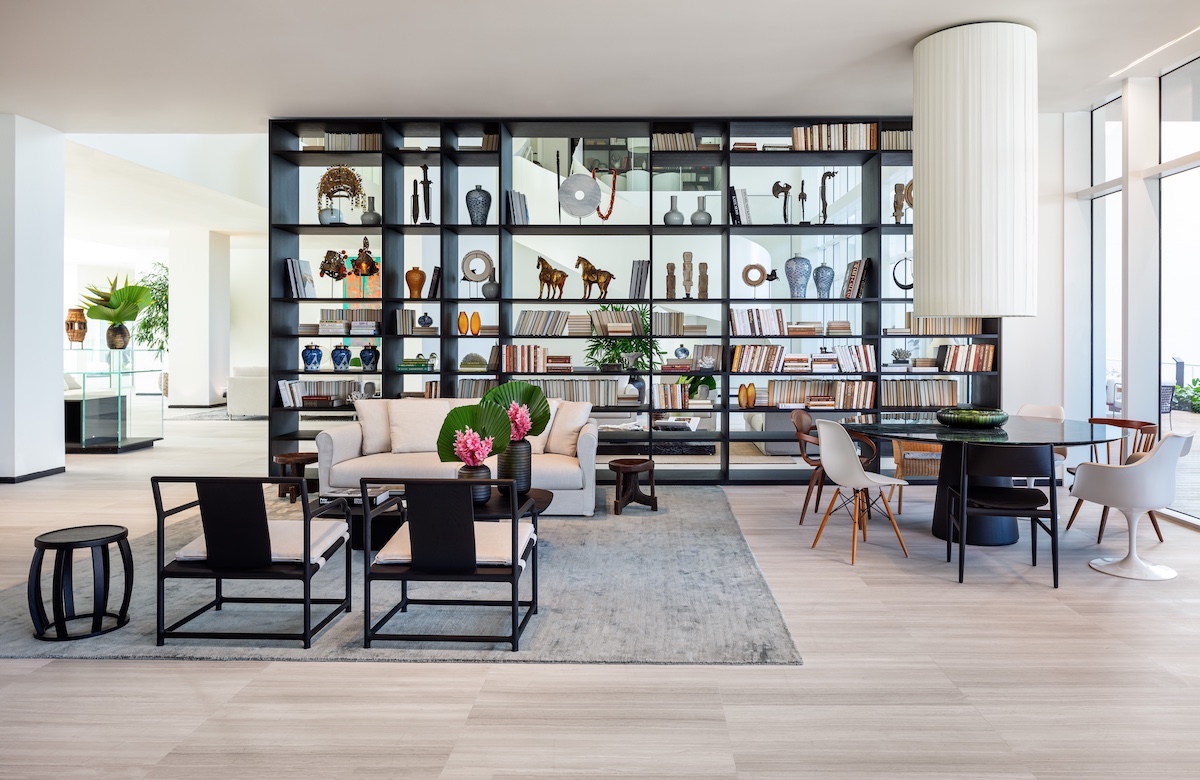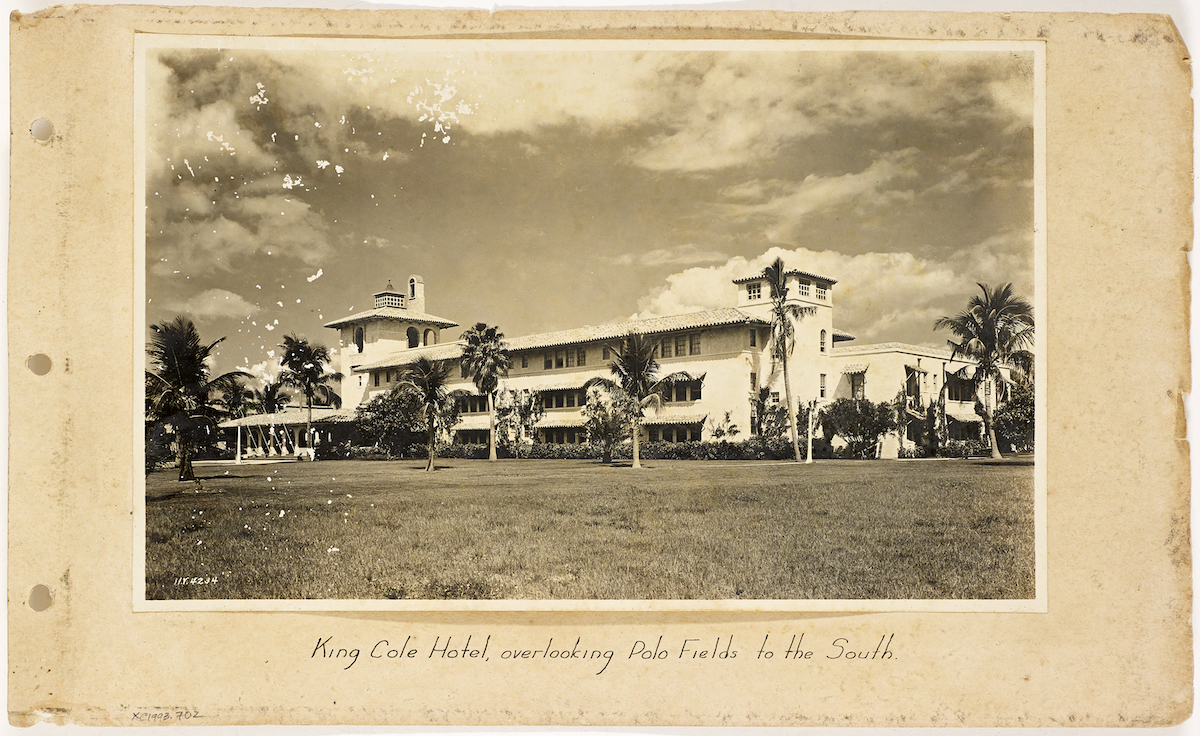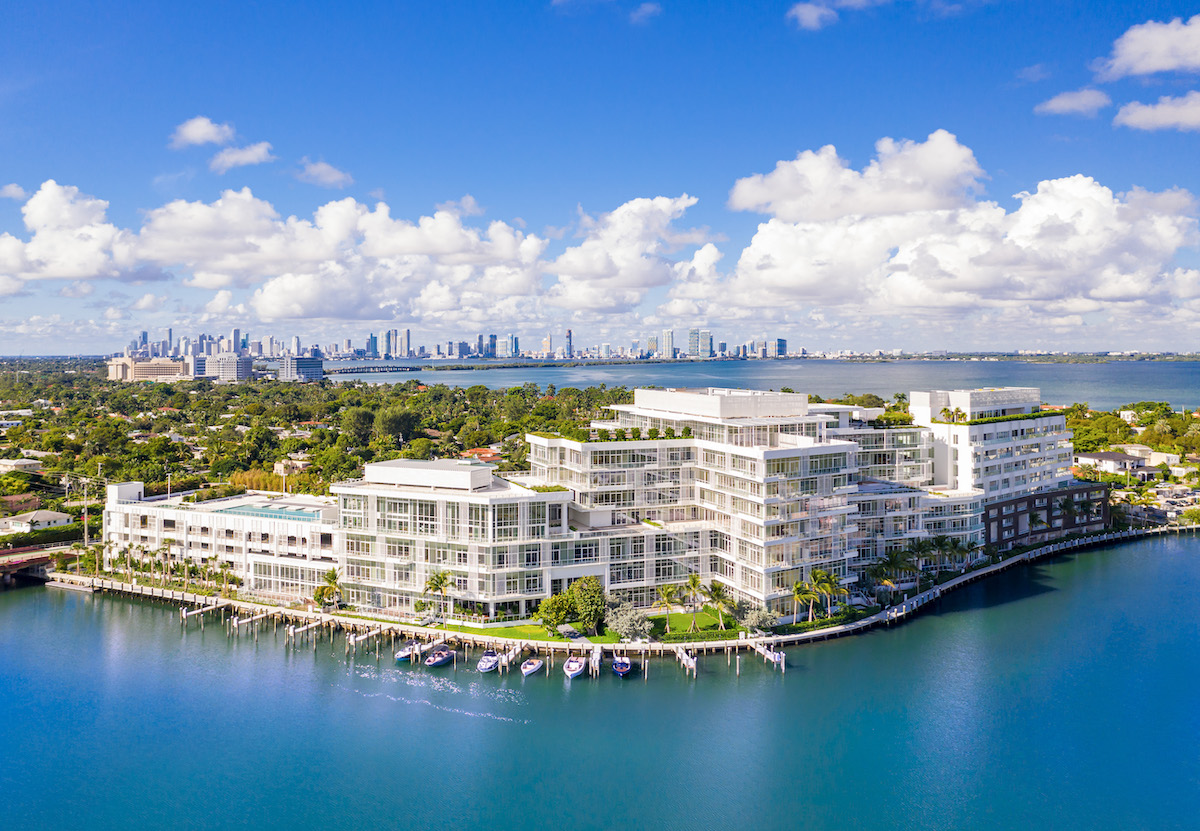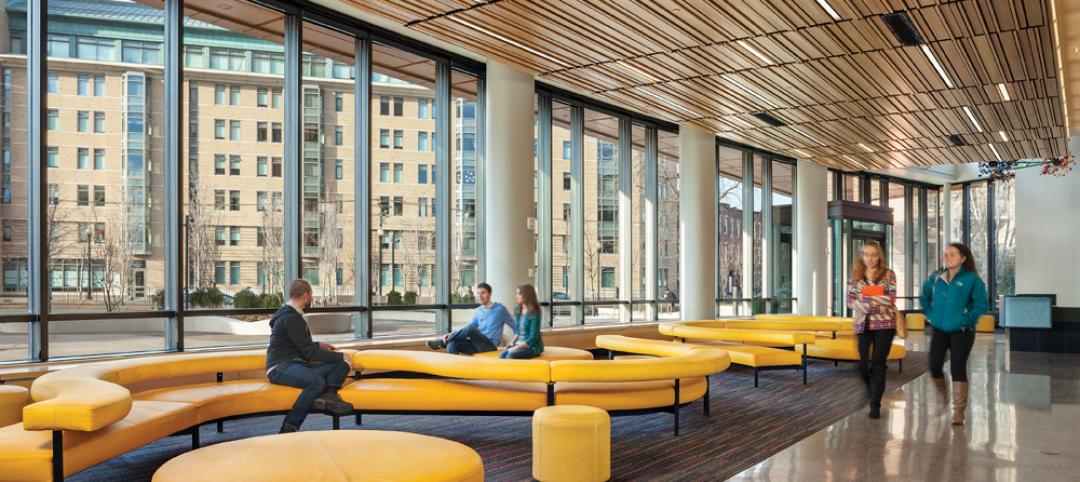In the 1920s, the King Cole Hotel helped put Miami Beach on the map as a popular tourist destination. Automotive industry pioneer and entrepreneur Carl Fisher developed the three-story, 60-room hotel to fulfill his vision of turning vacant land into an oceanfront winter getaway.
The hotel, which functioned as a military hospital during World War II, faced the wrecking ball in 1965 to make way for the property’s next occupant: the Miami Heart Institute. Over the next three decades, the hospital expanded its footprint on the 7.2-acre site to encompass six structures.
In 2000, Mount Sinai Medical Center acquired the Miami Heart Institute and ultimately consolidated its operations at the competing hospital system’s main campus about a mile away.
Real estate investment and development firm Lionheart Capital stepped in to purchase the deserted complex for $20 million in 2012, initiating the property’s third act as a luxury condo development. “It was a fair price, in an excellent location, and we felt confident we could transform the property into something truly special,” said Allison Greenfield, Partner at Lionheart Capital.

Residents have 24-hour access to a private art studio equipped with easels, sculpting surfaces, reference books, and supplies. Photo: Kim Sargent
But Lionheart faced some tough obstacles in converting the former hospital into condos—and starting from scratch wasn’t an option. “The site was overbuilt by about 600,000 square feet, so we would lose that space if we demolished the buildings,” said Greenfield. Rezoning the property to residential use would also limit the maximum building height of new construction to four stories.
Lionheart enlisted Stantec’s Miami practice to oversee the conversion process as architect of record. “The city was eager to approve the zoning change as long as the neighbors were in favor of it,” said Christina Villa, Senior Associate in Stantec’s Miami office.
ALSO SEE: Historic ‘skyscraper hospital’ in Brooklyn refashioned into 17 luxury condominium residences
Stantec staff met with residents of the surrounding Mid-Beach neighborhood, composed of single-family homes that range from historic 1920s structures to modern residences. “Most of the neighbors were ecstatic to hear that we were planning a condo development because it would decrease traffic and be more compatible with the neighborhood,” said Villa.
The intricate planning and design process involved reconfiguring the existing institutional building layouts to accommodate high-end residential units. “We stripped away everything that made the complex look like a hospital and brought it down to its bare columns, then started to carve out the massing of the buildings to make the floor plates work,” said Villa.
The process yielded a staggering 64 different unit layouts. “Unlike a typical South Florida multifamily building, where buyers choose a view and a stock layout, we essentially created 64 vertically stacked single-family homes,” said Greenfield.

The club room at the Ritz-Carlton Residences. Residents have access to the services of the Agatston Center for Private Medicine, led by Arthur Agatston, the cardiologist who created the South Beach Diet. Photo: Kim Sargent
Because the slabs between adjoining buildings did not align, the Stantec team planned each unit within the floor plates of its original structure, then created several new elevator lobbies that would transport residents directly up to their units.
The lower levels of the former hospital featured floor-to-floor heights of 12 to 14 feet, providing opportunities to create one-of-a-kind living spaces. “The price point for those lower floors is much higher than you would typically find in a condo tower because the units are so spectacular,” said Greenfield.
Miami's Ritz-Carlton Residences feature EUROPEAN ELEGANCE, MODERNIST AESTHETIC
To achieve its goals of establishing a European modernist design aesthetic, Lionheart engaged Italian architect and industrial designer Piero Lissoni as design architect. It was the first large-scale building project in the U.S. for the founder of Lissoni & Partners, an architecture and design studio with offices in Milan and New York.
Likening the property to “a new, small Portofino town,” Lissoni focused his attention on the building forms, façades, and public spaces. He also collaborated with Italian product designer Boffi to custom design the European-style kitchens and bathrooms in each unit.
When visitors enter the double-height main lobby, they have no clue they’re stepping into an environment that formerly housed an emergency department and surgical suites. Instead, they’re likely to be awed by the ironclad floating spiral staircase that anchors the space and the floor-to-ceiling glass wall that accentuates views of the adjacent private lake.

A floating spiral staircase marks the double-height main lobby, designed by architect Piero Lissoni, whose goal was to create the effect of a small fishing village in his native Italy. Photo: Kim Sargent
GUEST SUITES ADD A NEW OPTION TO THE MIX
The 678,000-sf Ritz-Carlton Residences, Miami Beach houses 111 condos that range in size from 2,000 sf to more than 10,000 sf and are priced from $2 million to $40 million. Also available for purchase are nine guest suites that function like hotel rooms and are positioned around an outdoor meditation garden. With the onset of COVID-19 lockdowns and work-from-home mandates, a few residents opted to convert these suites into private office environments.
Other outdoor amenity areas include a walking track that circumnavigates the property and a half-acre rooftop pool deck with private cabanas. Located atop the former hospital’s main parking structure, the expansive space offers panoramic vistas of the Atlantic Ocean, Biscayne Bay, and downtown Miami.
ALSO SEE: Designing multifamily housing for COVID-19
Residents can grow and pick their own fruits, vegetables, and herbs in the ecological food forest and community garden. They can even take advantage of a medical concierge service offered by the Agatston Center for Private Medicine, led by cardiologist Arthur Agatston, creator of the South Beach Diet.
A 36-slip private marina and captained day yacht on the neighboring Surprise Lake further distinguish the property from the region’s many other condo developments. Phase two, currently under construction, will add 15 single-family custom villas.
Since opening in February, the development is nearly sold out and has attracted an uncharacteristically large number of Florida-based residents. “I think it appeals to local buyers who may be leaving their house, but still want to maintain the individuality and specialness of their home environment,” said Greenfield. “The site is located in a beautiful, bucolic neighborhood that is perfect for those who really enjoy the South Florida lifestyle, and not just the weather.”

A postcard of the King Cole Hotel, built in 1920 by automotive industrialist Carl Fisher. The hotel was later converted to a hospital before being transitioned into residential use. Photo courtesy Stantec
PROJECT TEAM | THE RITZ-CARLTON RESIDENCES, MIAMI
DEVELOPER Lionheart Capital
DESIGN ARCHITECT | INTERIOR DESIGNER Lissoni & Partners
ARCHITECT OF RECORD Stantec
STRUCTURAL ENGINEER McNamara Salvia
CIVIL ENGINEER Kimley Horn
MEP ENGINEER Steven Feller, PE
BUILDING ENVELOPE CONSULTANT Paramount Consulting and Engineering
LANDSCAPE ARCHITECT Rhett Roy Landscape Architecture Planning
GENERAL CONTRACTOR Plaza Construction
Related Stories
| Nov 7, 2014
Arts college uses creative financing to build 493-bed student housing
Many states have cut back funding for higher education in recent years, and securing money for new housing has been tougher than ever for many colleges and universities. A recent residence hall project in Boston involving three colleges provides an inspiring example of how necessity can spawn invention in financing strategies.
| Nov 7, 2014
Prefab helps Valparaiso student residence project meet an ambitious deadline
Few colleges or universities have embraced prefabrication more wholeheartedly than Valparaiso (Ind.) University. The Lutheran-based institution completed a $27 million residence hall this past summer in which the structural elements were all precast.
| Nov 3, 2014
Novel 'self-climbing' elevator operates during construction of high-rise buildings
The JumpLift system from KONE uses a mobile machine room that moves upward as the construction progresses, speeding construction of tall towers.
| Nov 3, 2014
Cairo's ultra-green mixed-use development will be topped with flowing solar canopy
The solar canopy will shade green rooftop terraces and sky villas atop the nine-story structure.
| Oct 31, 2014
Dubai plans world’s next tallest towers
Emaar Properties has unveiled plans for a new project containing two towers that will top the charts in height, making them the world’s tallest towers once completed.
| Oct 29, 2014
Better guidance for appraising green buildings is steadily emerging
The Appraisal Foundation is striving to improve appraisers’ understanding of green valuation.
| Oct 27, 2014
Studio Gang Architects designs residential tower with exoskeleton-like exterior for Miami
Jeanne Gang's design reinvents the Florida room with shaded, asymmetrical balconies.
| Oct 21, 2014
Passive House concept gains momentum in apartment design
Passive House, an ultra-efficient building standard that originated in Germany, has been used for single-family homes since its inception in 1990. Only recently has the concept made its way into the U.S. commercial buildings market.
| Oct 21, 2014
Perkins Eastman white paper explores state of the senior living industry in the Carolinas
Among the experts interviewed for the white paper, there was a general consensus that the model for continuing-care retirement communities is changing, driven by both the changing consumers and more prevalent global interest on the effects of aging.
| Oct 16, 2014
Perkins+Will white paper examines alternatives to flame retardant building materials
The white paper includes a list of 193 flame retardants, including 29 discovered in building and household products, 50 found in the indoor environment, and 33 in human blood, milk, and tissues.
















